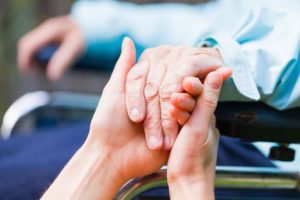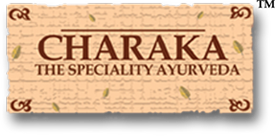 Paralysis is a loss of strength in and control over a muscle or group of muscles in a part of the body. Most of the time, this is not due to a problem with the muscles themselves. It is more likely due to a problem somewhere along the chain of nerve cells that runs from the body part to your brain and back again.
Paralysis is a loss of strength in and control over a muscle or group of muscles in a part of the body. Most of the time, this is not due to a problem with the muscles themselves. It is more likely due to a problem somewhere along the chain of nerve cells that runs from the body part to your brain and back again.
Disruption of communication of nerve impulses anywhere along the pathway from the brain to the muscles can impair control of muscle movement and cause muscle weakness and loss of coordination. Muscle weakness can progress to paralysis, loss of the ability to move the muscles.
There are many types and degrees of paralysis. The condition can be:
- Partial, when you still have some control of your muscles (sometimes called paresis).
- Complete, when you can’t move your muscles at all.
- Permanent, when muscle control never comes back.
- Temporary, when some or all muscle control returns.
- Flaccid, when the muscles get flabby and shrink.
- Spastic, when the muscles are tight and hard and jerk around oddly (spasm).
Paralysis can occur in any part of the body and is either localized, when it affects only one part of the body, or generalized, when it affects a wider area of the body.
Localized paralysis often affects areas such as the face, hands, feet, or vocal cords.
Generalized paralysis is broken down based on how much of the body is paralyzed:
- Monoplegia affects one limb only, such as one arm or one leg.
- Hemiplegia affects one side of the body, such as the leg and arm of the same side of the body.
- Diplegia affects the same area on both sides of the body, such as both arms or both sides of the face.
- Paraplegia affects both legs and sometimes parts of the trunk.
- Quadriplegia affects both arms and both legs and sometimes the entire area from the neck down. The function of the heart, lungs, and other organs might also be affected.
Some people are born paralyzed. Others develop paralysis due to an accident or a medical condition. The most common causes of paralysis include:
- Stroke
- Spinal cord injury
- Head injury
- Multiple sclerosis
Some other causes include:
- Cerebral palsy
- Guillain-Barré syndrome
- Peripheral neuropathy
- Toxins/poisons
- ALS (Lou Gehrig’s disease)
Stroke and transient ischemic attack are common and potentially life-threatening causes of paralysis. The degree and extent of neurological deficit depend upon the location and extension of damage to the brain cells or nervous system. In certain cases along with motor deficits, disturbance of speech (aphasia or dysarthria) and loss of higher functions are also observed.
The distribution of paralysis offers important clues to the site of nerve damage. Hemiplegia is almost always caused by brain damage on the side opposite the paralysis, often from a stroke. Paraplegia occurs after injury to the lower spinal cord, and quadriplegia occurs after damage to the upper spinal cord at the level of the shoulders or higher (the nerves controlling the arms leave the spine at that level). Diplegia usually indicates brain damage, most often from cerebral palsy. Monoplegia may be caused by isolated damage to either the central or the peripheral nervous system. Weakness or paralysis that occurs only in the arms and legs may indicate demyelinating disease. Fluctuating symptoms in different parts of the body may be caused by multiple sclerosis. Sudden paralysis is most often caused by injury or stroke. Spreading paralysis may indicate degenerative disease, inflammatory disease such as Guillain-Barré syndrome or CIDP, metabolic disorders, or inherited demyelinating disease.
While a few forms of paralysis let the patient continue to lead a normal life, there are a few that can cause severe complications. The dependence on crutches, wheelchairs, full-time nursing and a lot of other factors can increase significantly.
The most common complications are chest pains, high blood pressure, and depression. Sex life and fertility are affected differently in men and women.
Diagnosing paralysis is often easy to do because the main symptom - loss of muscle control in a body area is obvious. An important part of the diagnosis is to determine the cause of the paralysis. This can be relatively straightforward if the paralysis occurs after an event such as a stroke or spinal cord injury.
Some of the common tests:
- X-ray: This test uses small amounts of radiation to produce detailed images of the dense structures inside the body, such as the bones.
- CT scan: CT uses computers to combine many X-ray images into cross-sectional views of the inside of the body.
- MRI: MRI uses a large magnet, radio waves, and a computer to create clear images of the body.
- Myelography: This test uses a contrast dye that is injected into the spinal canal to make the nerves show up very clearly on an X-ray, CT scan, or MRI.
- Electromyography (EMG): This test is used to measure the electrical activity in the muscles and nerves.
- Spinal tap: A long needle is injected into the spine to collect spinal fluid.
Ayurveda Management of Paralysis

In spite of the various treatment modalities available in all medical streams available, Ayurveda has proved or stands to be one of the most effective treatment methodologies for the best possible recovery in Paralysis or stroke condition.
So, immediately after getting discharged from Acute medical care center or hospital, it is always highly recommendable to take Ayurveda treatment.
At CHARAKA, we offer excellent Panchakarma therapies along with oral medications for treating Paralysis. The therapies like Abhyanga swedam, Nasyam, Karna pooranam, Snehapanam, Virechanam, Shiro vasti, Sarvanga dhara (Pizhichil), Pichu, Navarakizhi, Vasti etc. are done as per the necessity and condition for about 4 – 5 weeks.
Oral medicines will be continued for 3 - 6 months depending on the recovery. Apart from these Diet & Life style modifications are essential throughout the treatment of Paralysis.
Early intervention of Ayurveda treatment maximizes the recovery chances of Paralysis condition.

